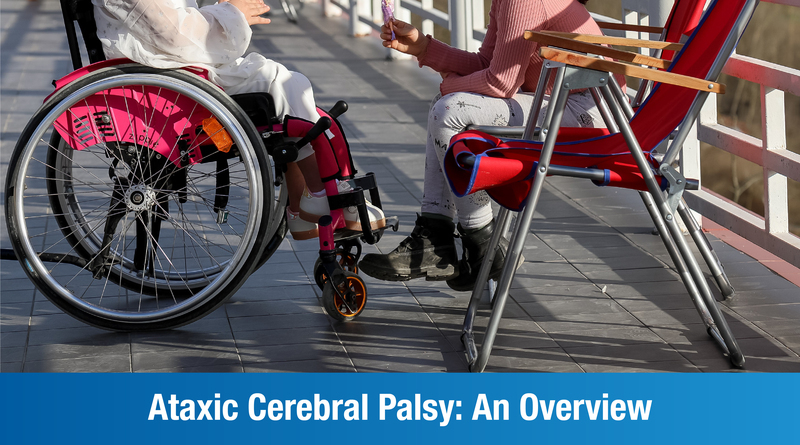
Cerebral Palsy is a non-progressive neurological condition that affects voluntary movement. Children with Ataxic Cerebral Palsy struggle with balance as well as motor skills like picking up objects, and difficulties with gait and speech. As one of the less common types of Cerebral Palsy, it’s important to understand exactly what it entails so that your child can get the right treatment. Here, we offer a brief introduction to what Ataxic Cerebral Palsy looks like.
Understanding Ataxic Cerebral Palsy
Ataxic Cerebral Palsy is a subtype of Cerebral Palsy, which refers to a group of neurological disorders that affect movement, muscle tone, coordination, and motor skills caused by damage or abnormalities in the developing brain. It typically occurs due to injury or infection before, during, or shortly after birth. Around 2.4% of Cerebral Palsy cases are Ataxic Cerebral Palsy. Children with Ataxic Cerebral Palsy experience problems with coordination, balance, and gait owing to damage sustained by the brain’s motor control centers. There is no cure for the condition, but treatment helps in improving control over movements and completing daily tasks more effectively.
Symptoms of Ataxic Cerebral Palsy
Typically, a case of Ataxic Cerebral Palsy can be diagnosed by the time the child is 2 years old. The symptoms typically manifest as delays in hitting developmental milestones such as rolling over, sitting up, standing, and walking. Other classic symptoms of Ataxic Cerebral Palsy include:
- Walking with legs unusually far apart
- Experiencing an unbalanced, jerky gait
- Trouble balancing
- Trouble with bringing hands together
- Difficulty with fine motor skills like writing
- Difficulty with visual depth perception
- Shakiness and tremors
- Speech difficulties
- Slow eye movements
Causes and Risk Factors of Ataxic Cerebral Palsy
Ataxic Cerebral Palsy occurs due to damage to the cerebellum at, before, or shortly after birth. The cerebellum is responsible for balance and coordination as well as posture and communication. When the cerebellum is damaged, motor signals cannot be relayed properly to the central nervous system. Damage can occur due to:
- Head trauma at the time of or shortly after being born
- Maternal infections during pregnancy
- Loss of oxygen due to breech birth or placental failure
- Fetal stroke
- Placental infections
Diagnosing Ataxic Cerebral Palsy
There is no specific diagnostic test for Ataxic Cerebral Palsy. If a child has been displaying symptoms, the doctor will assess their motor and speech abilities in the clinic and run some general tests before recommending the patient to a specialist. The specialist may conduct a more detailed neurological test along with an MRI scan, a CT scan, electromyography (EMG), or electroencephalography (EEG). This not only checks for signs of brain and/or muscle damage but also eliminates other conditions that could be responsible.
Treatment for Ataxic Cerebral Palsy
While there is no cure for Ataxic Cerebral Palsy, there are several treatment options the doctor can recommend based on the child’s unique symptoms. Typically, an Ataxic Cerebral Palsy treatment plan will include:
- Physical Therapy to improve strength and flexibility and to enable gross and fine motor skills
- Occupational Therapy to help children perform daily tasks like eating and getting dressed and also improve hand-eye coordination
- Speech Therapy to teach safe swallowing techniques and help children with articulation
- Massage therapy to ease daily pain
- Medication to ease severe muscle stiffness and/or pain
- Assistive devices like leg braces or walkers
- Surgery to correct bone or joint deformities
- Special nutrition to encourage growth and fitness
- Medication to treat co-occurring complications like epilepsy, ADHD, or incontinence
Parents and caregivers will need to help their child perform the exercises at home and ensure that the living space is adjusted as needed for the child’s safety.
Ataxic Cerebral Palsy can be difficult to live with, but the right treatment plan can do a great deal to help your child pick up the skills they need. Keep monitoring your child’s progress and work with the therapists to adjust the treatment plan as necessary. Above all, give them your unstinted love and patience as you navigate this journey together.










